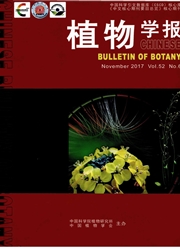

 中文摘要:
中文摘要:
产紫杉醇的内生真菌(Fusarium mairei)先培养在B5液体培养基中,然后制备成内生真菌培养液。在东北红豆杉(Taxus cuspidata)细胞悬浮培养的不同阶段(5、10和15天),用不同剂量的内生真菌培养液(2、4和6mL)分别进行处理。结果表明,在用4mL内生真菌培养液处理的植物细胞中可获得最高的紫杉醇产量(5.88mg·L^-1)与释放率(67%),分别是对照的1.9倍与5.6倍。添加时间方面,在植物细胞培养周期的第5天添加4mL内生真菌培养液,可获得最佳效果,紫杉醇产量与释放率分别为6.1mg·L^-1与75%,分别是对照的2倍与6.8倍。与其它诱导子相比,4mL内生真菌培养液不仅可提高紫杉醇的释放率,而且不会引起东北红豆杉细胞膜的明显伤害,说明内生真菌发酵液激活了紫杉醇主动运输过程中的相关酶类。
 英文摘要:
英文摘要:
To investigate the ability of endophytic fungus culture broth (EFCB) to improve paclitaxel release from cultured cells, EFCB was prepared from Fusarium maireicultured in B5 medium. Suspension cultures of Taxus cuspidata cells were treated with 2, 4 and 6 mL EFCB at different cultivation stages (days 5, 10 and 15). Cells treated with 4 mL EFCB showed the highest paclitaxel yield (5.88 mg·L^-1) and release ratio (67%), 1.9 and 5.6 times higher, respectively, than that of untreated control cells. In terms of timing of the addition of EFCB, the most desirable paclitaxel production (6.1 mg·L^-1) and release ratio (75%) were 2 and 6.8 times, respectively, higher than that of control cells, with 4 mL EFCB added to cultures on day 5 of cultivation. Compared with other elicitors, EFCB, at 4 mL, did not damage the plant cell membrane, although it promoted the paclitaxel release capability of plant cells, which suggests that EFCB can activate the related enzymes involved in paclitaxel transport in T. cuspidata cells.
 同期刊论文项目
同期刊论文项目
 同项目期刊论文
同项目期刊论文
 期刊信息
期刊信息
